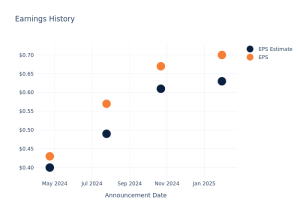Investors didn’t take President Donald Trump at his word, and now markets are selling off in reaction to his move to impose hefty tariffs on Canada, Mexico, and China.
In early trading, the tech-heavy Nasdaq Composite (^IXIC) sank nearly 2% while the S&P 500 (^GSPC) dropped 1.5%. Meanwhile, the Dow Jones Industrial Average (^DJI) shed more than 1%, or roughly 500 points.
“While we have not had tariffs baked into our own US equity market outlook, we have been concerned that many financial market participants have been underpricing the risk that they were more than a negotiation tool,” RBC Capital Markets head of US equity strategy Lori Calvasina wrote in a note to clients on Sunday.
While Trump has been clear since his first day in office that he would slap 25% tariffs on both Canada and Mexico, markets and economists appeared not to take the president at face value. The White House also said Friday that the administration planned to enact a 10% tariff on China.
“My sense is tariffs are coming, but I don’t think they’ll be quite on the same scale that the president has talked about,” Capital Economics Group chief economist Neil Shearing told Yahoo Finance on Thursday, adding, “for obvious reasons, and that is that it would tank the market.”
Read more: What are tariffs, and how do they affect you?
Even betting markets, which many believe were a leading indicator during the recent presidential election, weren’t pricing in high odds of tariffs. As of Jan. 29, Polymarket, a popular online betting offering, was pricing in just 20% odds that Trump imposed 25% tariffs on Canada and Mexico.
Now it appears the market consensus was offsides and investors are facing a repricing of potential risks. The US dollar shot up to 109, near its highest level in two years. Retail and auto stocks that could be impacted by tariffs also sold off.
“Full implemented tariffs with staying power don’t appear to be in the price of key markets,” a team of Morgan Stanley equity strategists and economists wrote on Sunday.
They added, “US equities may come under pressure, and services should outperform consumer goods.”
To be clear, there is still a path in which the widespread tariffs do not hold. The duties on all three countries will be fully in force by Tuesday, Feb. 4, and ongoing negotiations between the countries could continue.
Even still, the weekend tariff surprise for markets could be an early insight into the state of markets over the near-term as investors keep attempting to decipher Trump’s trade policy.


